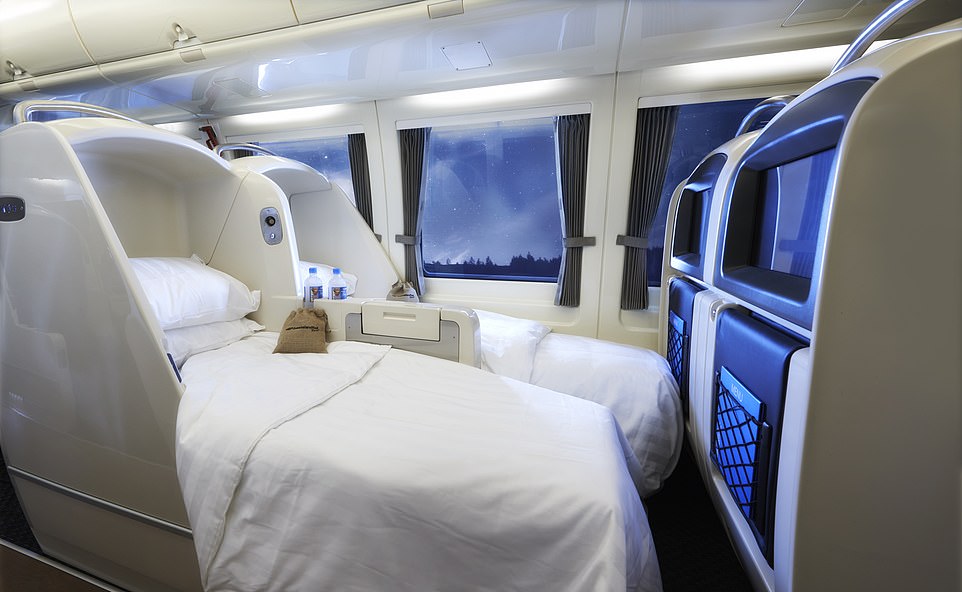Australia is a big country, about 4,000 kilometres wide and 3,200 kilometres from top to bottom. Most people there, quite sensibly, take a plane to get from point A to point B.
That is unless you hop on one of the country’s massive luxury trains, including the much-loved Ghan through Australia’s “Red Centre” between Adelaide and Darwin or the Indian Pacific, a sumptuous journey that stretches between Perth in Western Australia and Sydney on the east coast.
There are also other less “fancy” (less expensive) long-distance journeys. One of them is the magnificent and very economical Spirit of Queensland, which links Cairns, in the far north of the state of Queensland, with Brisbane, its capital. Even on the most luxurious berths, the journey costs only £205 (AU$403/US$263), which is equivalent to 19 pence per mile.
It’s a 1,681 km (1,045 mile) journey that takes about 25 hours. The flight time between the two interesting cities? Just 2 h 25 min. But for a train enthusiast (like me), “saving time” isn’t the important thing… it’s the journey that matters.
On a humid morning at Cairns station, I board the silver train and sit in one of its two RailBed carriages.
MailOnline Travel’s Tom Chesshyre travelled on the Spirit of Queensland sleeper train between Cairns, in the far north of Queensland state, and Brisbane, its capital. His cabin was an innovative RailBed cabin (above), which features an entertainment screen.
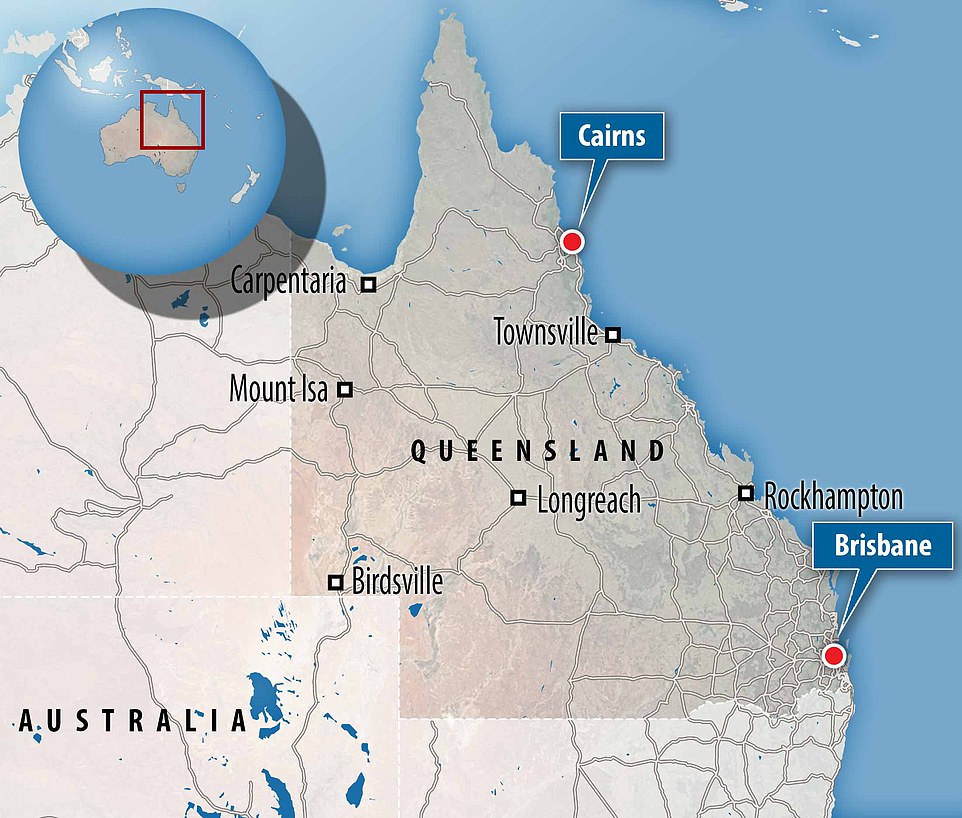
Tom’s journey was 1,681 kilometres long and took around 25 hours. The train expert reveals: “You’ll leave Cairns at 9.35am and arrive at 10.20am, all being well, the next day.”
As there are no bunk beds or private cabins on the Spirit of Queensland, the RailBeds (large cabins with leather seats that fold down into platforms at night) are the best option available.
It will depart Cairns at 9.35am and arrive at 10.20am, if all goes well, the following day. From Brisbane to Cairns, it will depart at 1.45pm and arrive at its destination just over 24 hours later, at 2.30pm.
In total, there are 35 RailBeds in the two cars: 16 in Car B (where I am) and 19 in the adjacent Car C. The reason there are fewer seats in Car B is that there is a shower room for RailBed passengers only.
The other way to travel is in one of three economy carriages in addition to the Spirit of Queensland Café carriage. These offer up to 51 berths, which are much narrower.
My RailBed is in front of Don and Noelene, retired real estate agents from Springwood, New South Wales, who are on holiday with friends sitting in the back row. Soon they will all become my friends.
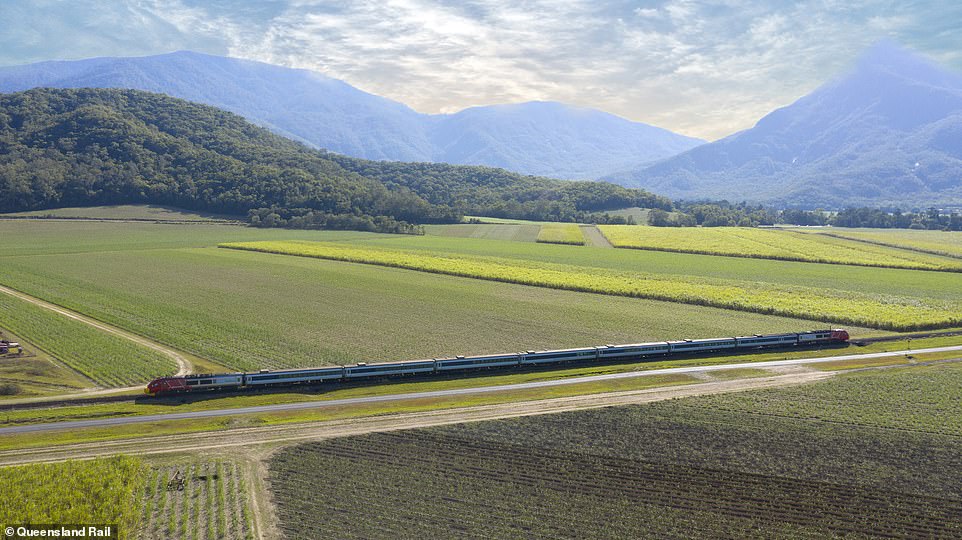
The Spirit of Queensland offers 35 RailBeds, economy seating and a cafe car.
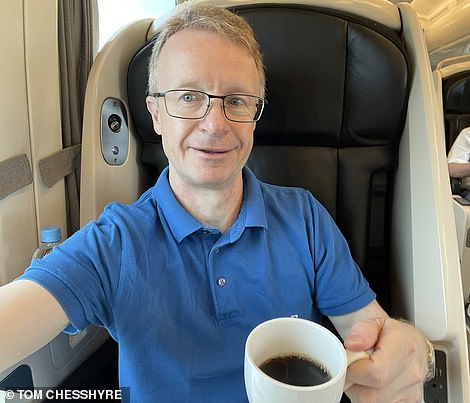
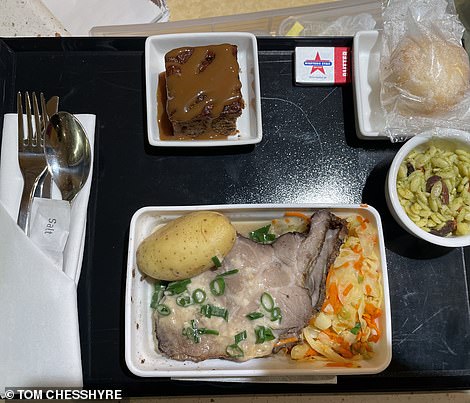
Tom (left) explains that the RailBeds give a sense of “reasonable privacy.” The food on board (right) is “decent,” though “far from gourmet.”
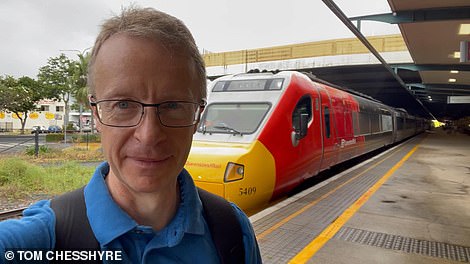
A still from Tom’s fascinating video of the trip.
The seats feature a handy reading light, headphones for the entertainment system (featuring Hollywood movies, music albums and podcasts about the history of the Cairns-Brisbane line, first opened in 1924), an inflatable head support and a Bubbles Organic amenity bag containing soap, moisturiser and lip balm.
The railed beds have a pod-like appearance with curved sides, so even though you share the space with others, it feels fairly private. That said, you may (as I did) hear snoring at night, and sometimes overhear loud conversations in nearby rows (not from Don and Noelene, I hasten to add) about romances gone tragically wrong and tales of “fellows” who became involved in nefarious and gruesome crimes.
This is all part of the experience (and a lot of fun, actually).
You are served three meals (lunch, dinner and breakfast), plus tea, coffee and biscuits on arrival. As I get to know Don and Noelene, the Spirit of Queensland heads south, passing an unusual triangular-shaped hill known as Walsh’s Pyramid, which rises out of the low-lying clouds.
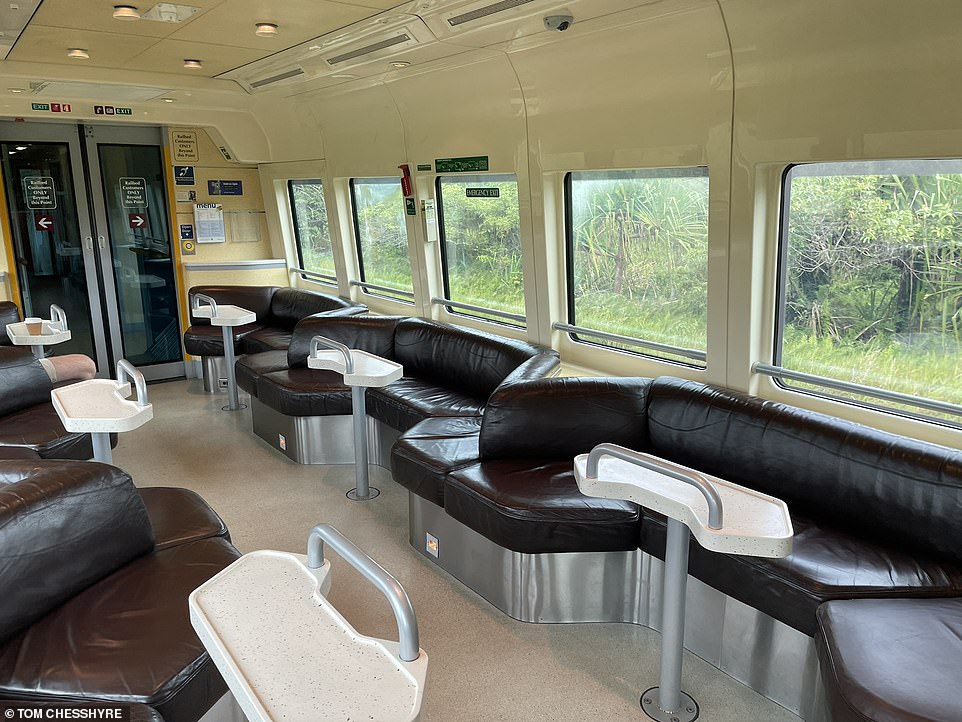
The cafe car, where Tom explains, sandwiches (£2.90) and hot meals (£5 for meat and rice) are on offer, as well as Great Northern Super Crisp beers (£3.42 a can) and glasses of Australian shiraz/sauvignon blanc (£4.21 for 187ml).
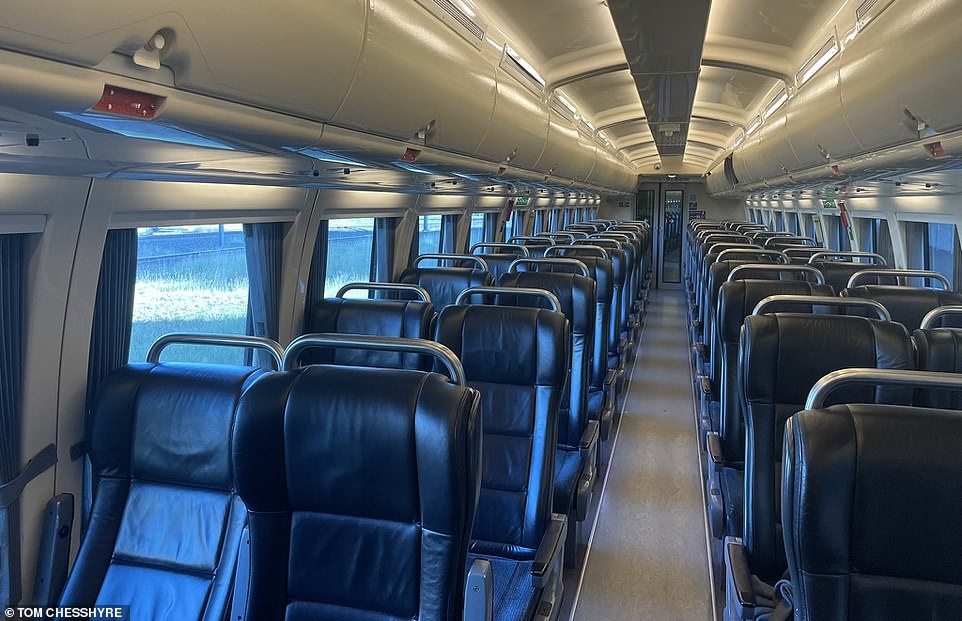
Above is one of the Spirit of Queensland’s economy carriages, where the seating is much less spacious. Each economy carriage offers 51 berths.
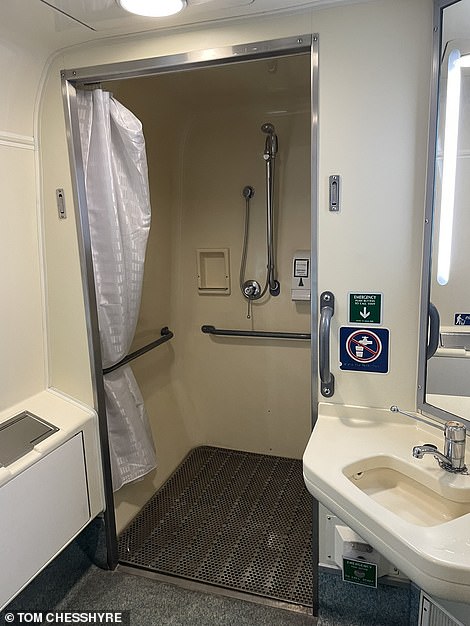
Car B has a dedicated bathroom for RailBed passengers (above)
The landscape alternates between wild jungle thickets and large sugar cane plantations, where mini train tracks pass with metal cage-shaped wagons to transport the cane to the sugar mills. As we pass, we see how large columns of steam rise from the chimneys.
In the cafe car, which serves sandwiches (£2.90) and hot meals (£5 for beef and rice), as well as Great Northern Super Crisp beers (£3.42 a can) and glasses of Australian shiraz/sauvignon blanc (£4.21 for 187ml), there are comfortable low leather seats arranged in a zigzag pattern by the windows. There I meet Kerry, the friendly passenger services supervisor.
As the rain begins to pour down – unfortunately making it impossible to see out of the window – he tells me that there are 176 passengers on board and that the maximum speed is 160km/h, although in the sugar regions of the northern section it is slower (as the sugar railway tracks often cross the main lines, making the journey uneven). There are five services in each direction each week, with three sets of trains. The crew changes three times on each journey.
Are there any Brits coming on board? “A few,” he says. “We once had Michael Portillo on board.”
We pass through Tully, a remote station with a sign saying it’s the wettest area in Australia (with a record rainfall of 7.9 metres/25 feet in one incredible year, 1950). There are 29 stops in a pleasantly quiet little town in all, and passengers are told over loudspeakers whether they can get off to stretch their legs and for how long, although “we take no responsibility for anyone left behind.”
At Tully, a pretty station with hanging baskets of ferns and flowers, driver Alan is collecting his lunch (he had called ahead to order a takeaway). He stops for a chat and tells me about the locomotives used on the narrow gauge (3ft 6in) line, one at each end of the train. They are “diesel hydraulic, V12” engines with a total power output of 7200bhp.
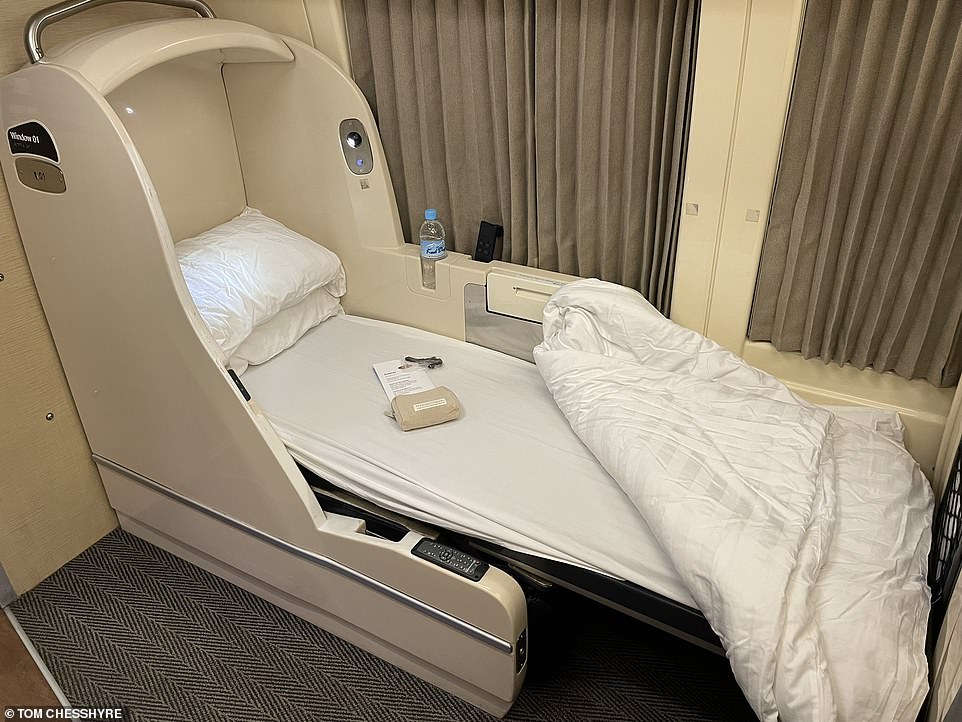
Tom reveals he ‘slept like a log’ after having his bed made up
Collisions with animals on the track, including kangaroos, are common. “If you hit a cow at 120km/h, you notice,” he says. “It can make a hole a metre wide. It happened to another driver the other day. He said he was terrified.”
Not surprisingly, trains have well-designed noses that make derailments virtually impossible.
The meals on board are decent, though far from gourmet: chicken and rice for lunch (could have been better with a bit more seasoning) and roast pork with potatoes and vegetables for dinner (not bad, in my opinion, though Don and Noelene are not impressed).
I sleep like a log, after my bed is made up (the staff does this for all passengers). And in the morning the lights come on at 6:30 for a hot breakfast of muesli and yoghurt – again fine, nothing special.
The landscape becomes more mountainous and then the suburbs emerge, followed by the shiny skyscrapers of Brisbane’s CBD (Central Business District).
The line’s first services were called the Sunshine Express and later the Sunlander, and offered the world’s first air-conditioned carriages. These were glamorous days when important and respected people flocked to the line, as well as tens of thousands of tourists each year.
It may not be like that now, but for value for money and a wonderful adventure, the Spirit of Queensland is hard to beat.
Tom Chesshyre is the author of Slow trains to Istanbul… and back: a 4,570-mile adventure in 55 journeyswhich was published by Summerdale last month.


